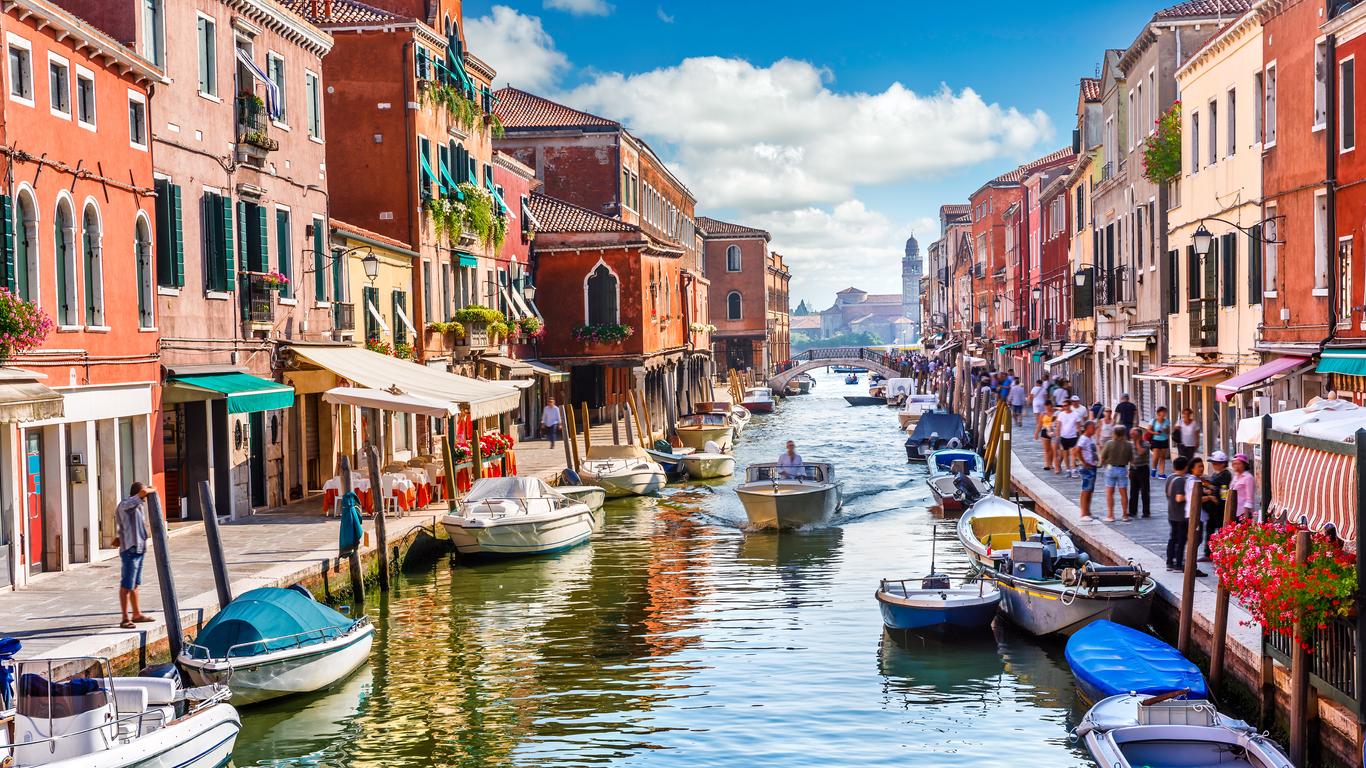Venice's northern lagoon is surrounded with islands, where visitors can laze away afternoons on al fresco terraces, indulge in quality seafood, and explore the ancient art of glassblowing. This area is called Murano, where seven islands are separated by narrow channels filled with gondoliers and their charming boats. Venice is the city on the water and it's in Murano that the dreamy images are so resplendent; spending a day cruising around is one of the city's most captivating experiences.
Bridges link the islands, and grand medieval houses stand over the canals and waterways. Each has its distinctive sights, although the main attractions aren't the churches or shops, but the atmosphere of these lush island escapes.Some cities around the world have a bustling suburban sprawl, but the outskirts of Venice are filled with mystical islands. Enjoy a seafood feast at a waterfront restaurant, discover fabulous hand-blown glassworks that are like pieces of art, then wander along the canals and wonder is there's anywhere in the world as quaint as Venice. Two absolute standouts are the Murano Glass Museum in Palazzo Giustinian, which offers a historical insight into the glassblowing, and the Church of Santa Maria e San Donato with its fabulous Byzantine mosaic pavement.
Getting around Murano is the best part of the experience. It's easy to spend an afternoon cruising on the lagoon and canals, taking in the architecture and gazing across at the domes and spires of Venice City Centre. The only way to get to Murano is by boat, either one of the public vaporetto water buses or in a private water taxi. The tourist-focused Alilaguna green line also provides transport to Murano and other northern islands.
While the Murano islands have been inhabited since Roman times, they began to flourish in the late 13th century, when all glassmakers were forced out of Venice due to the risk of fires. Within a few decades, Murano was Europe's major glass producer, creating everything from colourful beads to elaborate mirrors and astonishing chandeliers. The tradition has continued, and many Murano shops sell glass made using the same centuries-old techniques. Look out for a distinctive Murano trademark on the glass to distinguish the real works from the imports.





